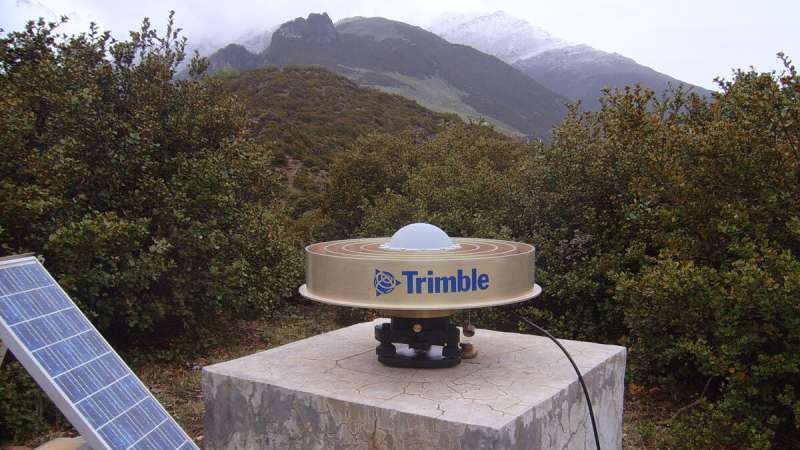Support for a 'jelly sandwich' model of the Tibetan Plateau

With an area of 2.5 million square kilometers and an altitude that can exceed 4,500 meters, the Tibetan Plateau is the largest and highest plateau on Earth. Although its formation over the past 65 million years is broadly attributed to a collision between the tectonic plates of India and Asia, the details of its genesis and ongoing evolution remain hotly debated.
One central question is whether the plateau's deformation mechanism is broad and fluidlike or narrow and blocklike. Deformation is governed in part by the physical structure of the lithosphere in the region. One proposed model, the "jelly sandwich," suggests a relatively weak lower crust surrounded by a stronger upper crust above and a strong upper mantle below. A competing model, the "crème brûlée," argues for a strong, but brittle, upper crust, with a softer lower crust and upper mantle below.
Wang et al. attempt to distinguish between the available models in a new study by using an expansive new data set resulting from the 2008 magnitude 7.9 Wenchuan earthquake, which occurred at the eastern margin of the Tibetan Plateau in western China. They present data consisting of 86 time series of displacements derived from GPS measurement stations. Some individual data series begin several days after the earthquake and extend for more than nine years.
The authors use these data to constrain a finite element model spanning the eastern Tibetan Plateau and encompassing the crust and upper mantle. In the region to the northwest of the earthquake, they find the steady state viscosity of the upper mantle to be more than twice that of the lower crust, in line with the expectations of the jelly sandwich model. The viscosity of the lower crust, however, is not as low as some models have implied, suggesting that deformation of Tibet may not be driven by injection of material into the lower crust but instead by stressing of the entire lithosphere.
During the seismic event, this viscosity differential expanded by an order of magnitude, illustrating the nonlinear forces at play. The model also attributes different bulk viscosities to other regions proximal to the earthquake, indicative of the complex geologic nature of this unique plateau.
More information: Min Wang et al, Postseismic Deformation of the 2008 Wenchuan Earthquake Illuminates Lithospheric Rheological Structure and Dynamics of Eastern Tibet, Journal of Geophysical Research: Solid Earth (2021). DOI: 10.1029/2021JB022399
Journal information: Journal of Geophysical Research: Solid Earth
Provided by American Geophysical Union
This story is republished courtesy of Eos, hosted by the American Geophysical Union. Read the original story here.





















